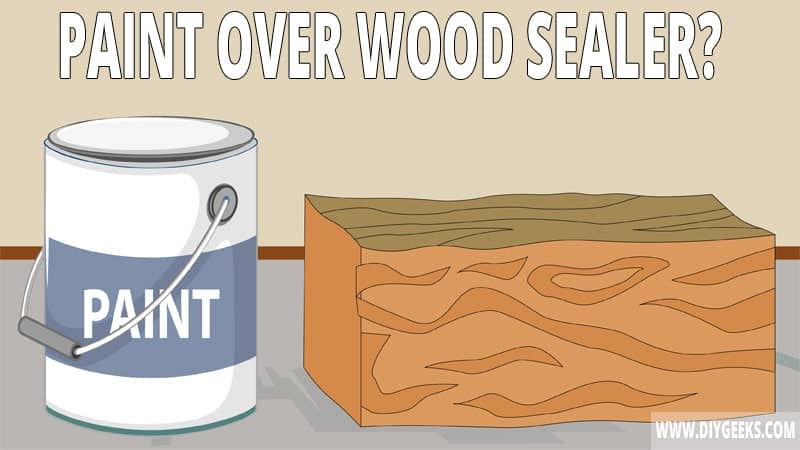You can paint over wood sealer if you sand its glossy finish and apply a primer coating over it. Sanding removes the sealer’s glossy moisture-resistant finish while the primer creates a textured layer to enhance paint adhesion.
To paint over wood sealer, clean the finish, sand the finish, apply primer, apply paint, and seal the finish.
The wood sealer must cure (dry fully) as its finish must be hard (rigid) enough to withstand the sandpaper abrasive side.
Can You Paint Over Wood Sealer?
You can paint over wood sealer if you sand it properly and apply a primer coating. Sanding removes the sealer’s glossy moisture-resistant top layer, while the primer creates a textured layer for the new paint to penetrate and adhere better.
The wood sealer finish creates a glossy moisture-resistant coating that prevents paint penetration and adhesion. So, you can’t paint directly over wood sealer if you don’t sand and apply a primer coating.
Most paints are penetrating finishes and must penetrate a surface to adhere. So, the paint won’t adhere if it can’t penetrate the sealer’s moisture-resistant finish.
How Long Must Wood Sealer Dry Before Painting?
Wood sealer must cure (dry fully) before painting as it must be hard (rigid) enough to withstand the sandpaper. The exact dry time depends on the sealer type. For instance, water-based polyurethane takes 24 hours to cure.
If you paint over wood sealer before it cures (dries fully) the finish turns blotchy, sticky, tacky, or can peel off. That’s because the finish isn’t hard (rigid) enough to withstand the sandpaper abrasive side, and the paint mixes with the sealer and creates an inconsistent finish because they aren’t compatible.
What Paint Type Can You Use Over Wood Sealers?
You can use any paint type over a wood sealer finish as long as you sand and prime the finish. But, using acrylic latex is recommended as it has good adhesive qualities and creates a colorful finish.
If you use water-based paint, ensure to properly seal the finish after the paint dries. Water-based paints aren’t durable and don’t offer good surface protection.
You can use oil-based paint over a wood sealer finish, but you must sand the finish more to allow the paint to adhere better. Oil-based paint has a thicker viscosity and needs to have more space to adhere better.
You can’t use wood stain over a wood sealer finish unless you completely remove the finish and properly sand the surface. Wood stains are penetrating finishes and must penetrate the surface pores to adhere.
How To Paint Over Wood Sealer?
To paint over wood sealer, do the following things.
- Clean the Finish.
- Sand the Finish.
- Apply Primer.
- Apply Paint.
- Seal the Finish.
The tools you need for this project are listed below.
- Sandpaper
- Paint
- Primer
- Rags
- Mineral spirits
- Sheets
- Masking tape
- A vacuum or duster
- Paintbrushes or a sprayer
- Water-based polyurethane
1. Clean the Finish
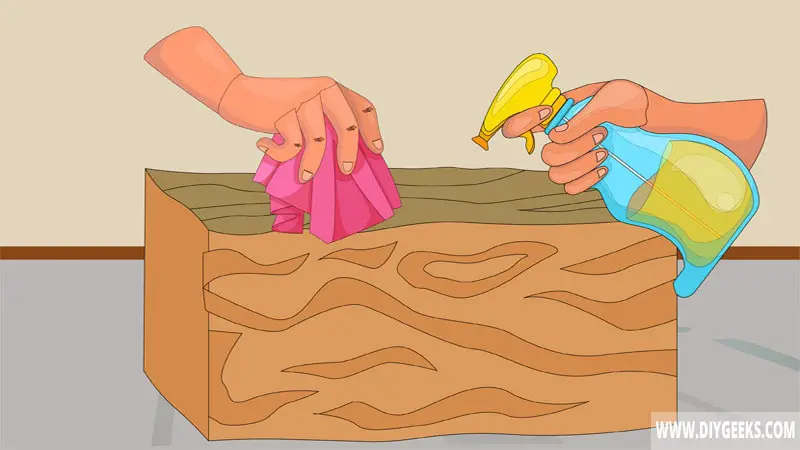
Clean the wood sealer with soapy water to remove dust, dirt, and debris that can clog the sandpaper. If you don’t clean the finish, the sandpaper will get clogged faster and be less effective.
2. Sand the Finish
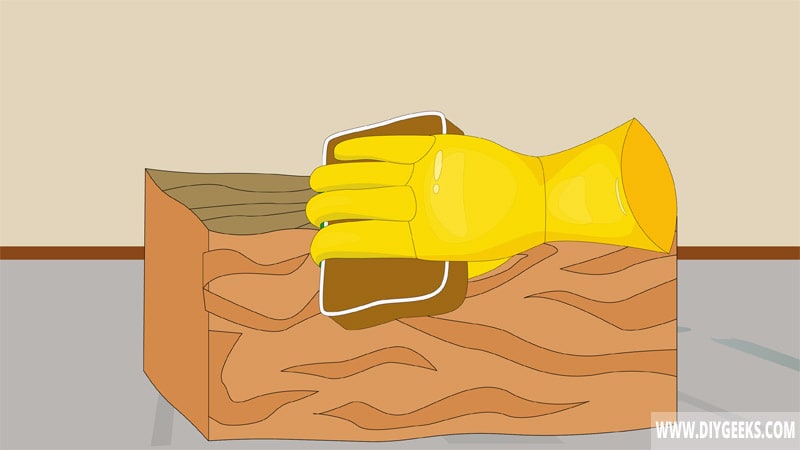
Sand the wood sealer finish with fine-grit sandpaper (220-grit) to remove its glossy moisture-resistant top layer, create a rough texture over the finish to improve the paint adhesion, and remove surface imperfections. Ensure the glossy top coat is completely removed.
Fine-grit sandpaper is abrasive enough to remove the sealer’s glossy top coat, but can’t remove the entire finish. Use coarse-grit sandpaper (40-grit) if you want to remove the entire sealer finish and reveal the underlying surface.
Ensure to clean the surface after sanding to remove the dust.
3. Apply Primer
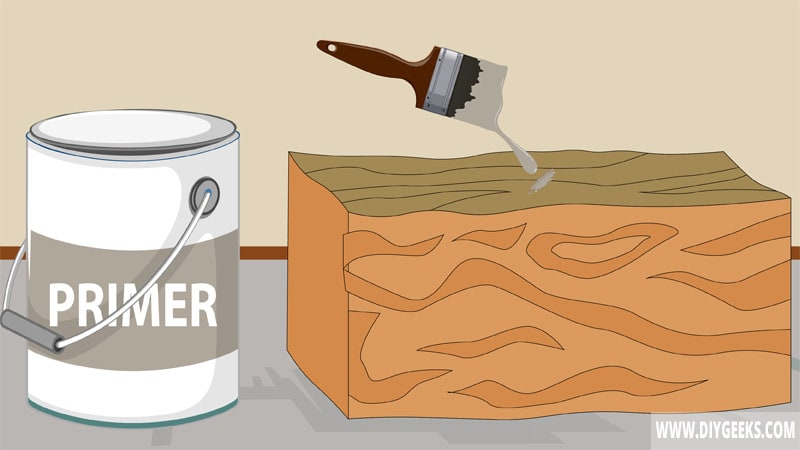
Apply one (1) primer coat over the wood sealer to improve the paint adhesion. Primer covers the wood sealer coating and creates a textured layer that the paint can penetrate and adhere to.
4. Apply Paint
Apply 2-3 paint coats over the surface with a paintbrush, roller, or sprayer. Wait until one coat dries before applying the next one.
4. Seal The Finish
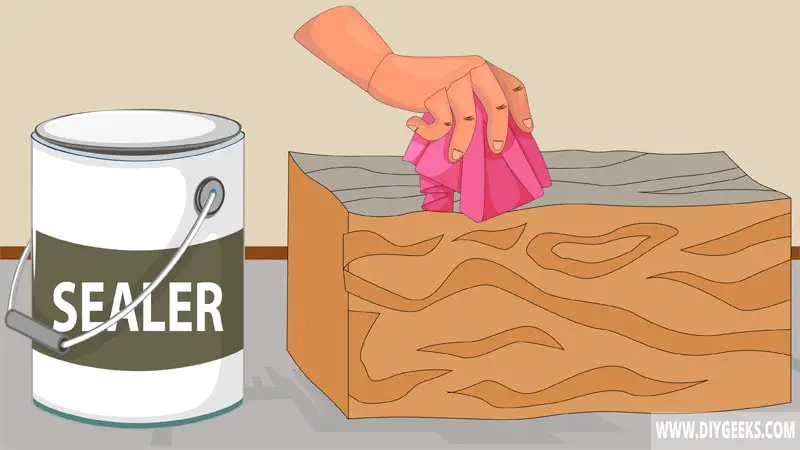
Seal the paint finish with wood sealer to improve the durability and protect the surface from moisture, water, scratches, and other damage. You can use polyurethane, varnish, or lacquer as a wood sealer.
Does Painting Over Sealer Weaken the Finish?
Painting over sealer does weaken the finish if you don’t seal the finish afterward. The finish will be weaker if you remove a wood sealer finish and apply a paint coating over it.
Most paints aren’t formulated with protective additives and don’t offer protection to underlying surfaces from constant water or moisture. A paint finish gets removed if exposed to constant water, moisture, or weather elements.
On the other hand, a wood sealer finish is resistant to moisture, water, scratches, and outdoor weather elements. A sealed wooden surface lasts two times more outdoors than an unsealed painted wooden surface.
